Cicadas During COVID — A ‘Golden Moment’ For Classroom Engagement At the End of an Isolating School Year
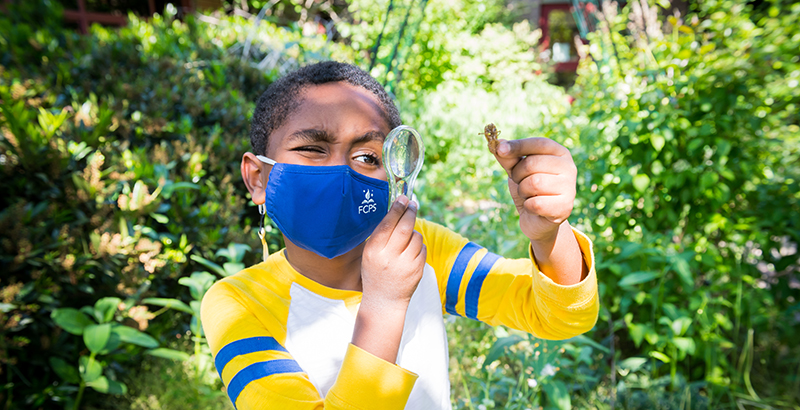
Get essential education news and commentary delivered straight to your inbox. Sign up here for The 74’s daily newsletter.
The Brood X cicadas that have swarmed parts of the United States in recent weeks emerge every 17 years, which scientists believe could be a survival tactic that helps them avoid matching their predators’ life cycles.
For science teachers around the country who live and work in the regions where the periodical cicadas have come out this year, the timing is perfect: After a year of virtual lessons, flagging student engagement and ongoing stress, a real-life science lesson has crawled out of the ground — and started singing.
For Nancy Murtaugh, a fourth-grade math and science teacher at Fairfield North Elementary in Ohio, the cicada unit was a “golden moment” at the end of a long school year.
“Everything just came together and I felt like, this is our class, we’re back,” she said.
“They were engaged in learning, they were 100 percent in. And that’s when you make the brain connections,” Murtaugh said. “If you’re not actively involved in something, and you don’t care about it, you’re not going to make those brain connections, it’s not going to stay in your long-term memory. They’re going to remember this stuff forever.”
Murtaugh’s lessons on the cicadas incorporated far more than science, touching on math (Roman numerals and prime numbers), art (origami cicadas), English (writing letters to the first-graders about about what they’d learned) and geography (mapping where the different cicada broods emerge).
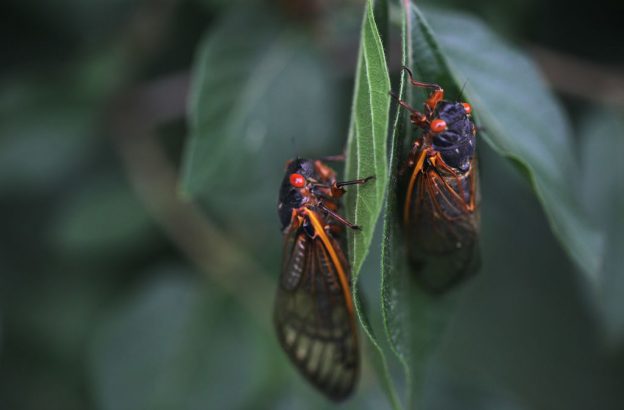
When they first started to see the bugs, Murtaugh’s students weren’t sure they wanted to get too close, so she tried to “ham them up,” she said. “I just kept saying, ‘Oh, they’re so silly looking. There’s nothing to be afraid of.’” While the kids came around on the cicadas and started to treat them like pets, many adults consider them pests who make too much noise and threaten their trees and gardens. (Only very young trees are at risk of being damaged by cicadas, who lay eggs in tree branches, experts say.)
For Jenn Carroll, teaching her Fairfield, Ohio, high school students about the cicadas, which appear in parts of 15 states, is personal. As a college student, she helped Gene Kritsky, a leading expert on periodical cicadas at Mount St. Joseph University in Cincinnati, with his research. At the time, he was studying what soil temperature is needed for the cicadas to come out. (They emerge when the top layer of soil reaches about 64 degrees.)
Carroll, who teaches environmental science, doesn’t mind that her students think of her as “that crazy cicada teacher,” she said. In addition to the science lessons about the insect life cycle and survival strategy, Carroll said the cicadas can teach students about the passage of time, causing them to consider where they’ll be in 17 years, and how the natural world continued to turn even as many humans spent the last year in lockdown fearing a virus.
“They’re still going to do this every 17 years, no matter what is going on in the world,” she said.
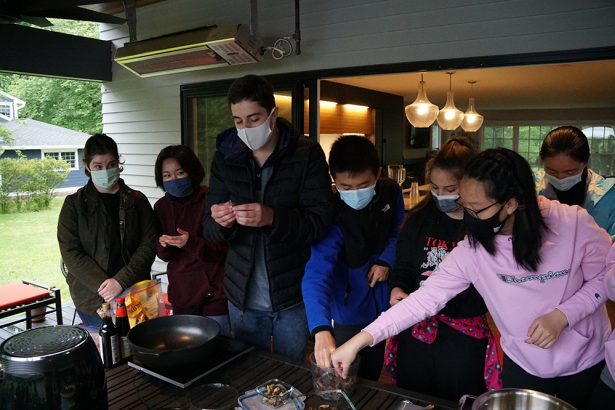
A good source of protein
A group of students in Princeton, New Jersey, have taken hands-on learning to the next level. Princeton High School’s insect-eating club has hosted cicada tastings to introduce their community to the periodical snack. Students stir fried and deep fried cicadas and mixed them into cookies, brownies and banana bread.
“We just want to spread the awareness that these are positive beneficial creatures. And instead of killing them, we should learn to like to, you know, either use them or protect them,” student Mulin Huan said.
View this post on Instagram
Matthew Livingston, founder of the insect-eating club, said he hopes introducing neighbors to cicada snacks will inspire them to eat other insects, which are a more environmentally sustainable source of protein than red meat, he said. Livingston has also shared information about the bugs with younger students in the area.
“Both classes completely blew my mind about how open minded they were,” he said. “I know that when I was in fifth grade, I absolutely didn’t want to eat insects.”
Students show some of the foods they made using cicadas in Princeton, New Jersey.
In addition to being a sustainable snack for high schoolers, the swarm “helps move nutrients around the ecosystem, aerate the soil, and relieve predatory pressure on non-cicada insect populations,” expert Elizabeth Barnes told National Geographic.
Raising ‘environmental stewards’
Andrea Auerbach, an environmental educator at Belvedere Elementary School in Fairfax County, Virginia, said students have been more engaged in the cicada lessons than anything she’s ever taught. Learning about the insects has inspired a sense of wonder in the kids, she said, and they’re willing to pick up cicadas without fear now.
Students have also been asking her questions about the impact humans can have on cicadas, such as what happens when they build a house in a place where cicadas are burrowing underground.
“If we can connect students with nature, we’d be able to have a generation of environmental stewards,” she said.
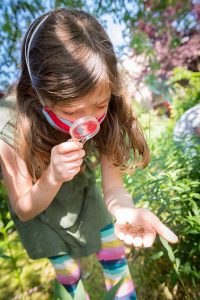
The cicadas have even boosted student engagement for those learning virtually. Matt Mueller, a third-grade science and math teacher in Baltimore, has been teaching about the insects twice a day — in the morning to students who come in person and after lunch to students who are learning on Zoom.
On a recent afternoon, he logged into Zoom and then took his phone outside to show his students the cicadas climbing the trees outside the school. He picked up a few and showed the class how to tell if the cicadas were male or female: The males make the loud noise and have a rounded abdomen, while the females’ abdomens come to a point, which they use to pierce tree branches when laying their eggs.
The students learning online “come alive” during the cicada lessons, he said, and are more engaged than they are in his health and math classes. “You can see that they love it. They want to talk about it. The cameras come on, and we’re just going full [steam ahead] learning about the cicadas.”
A chance to be ‘citizen scientists’
The cicadas are also giving students a chance to engage with professional scientists and contribute to academic research.
In Carbon County, Pennsylvania, Anna Leigh Conway has found that “getting little girls really comfortable with big insects … is always really fun.”
A high school biology teacher at the Carbon Career and Technical Institute, Conway is on sabbatical this semester — she survived a bad case of COVID-19 right before giving birth earlier this year — but she isn’t letting that get in the way of educating kids in her community about the cicadas.
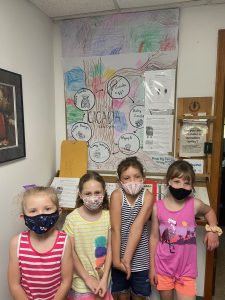
“I couldn’t let them miss this experience,” she said. In addition to providing lesson plans and materials to the substitute teacher in her classroom at the high school, she’s supporting a local environmental education center and her daughter’s Girl Scout Troop on cicada education.
Conway’s students and the Girl Scouts are also sending cicada shells and other specimens to DeAnna Beasley, an ecologist at the University of Tennessee Chattanooga who studies periodical cicadas.
The Girl Scouts also filled out envelopes with Beasley’s information so other visitors to the environmental center can send her anything they find — and so the girls can earn citizen scientist badges.
“It just turns into a real magical experience where there’s no fear left, when you feel comfortable with them.”
Get stories like these delivered straight to your inbox. Sign up for The 74 Newsletter

;)
